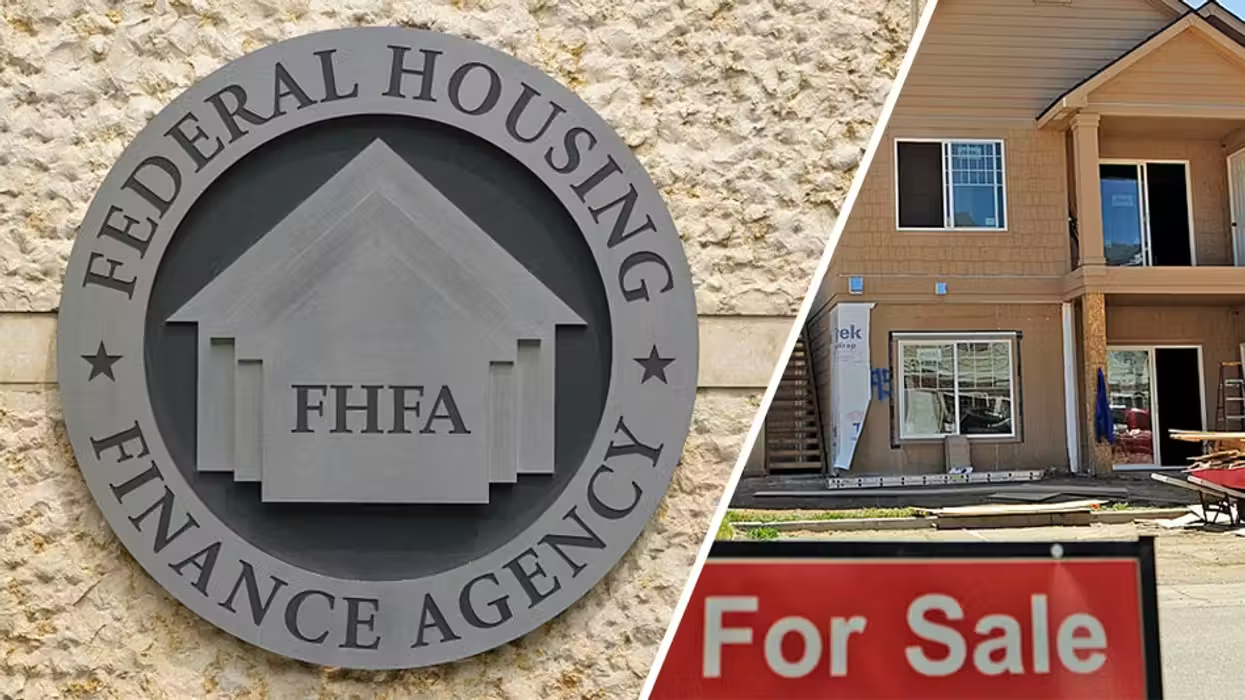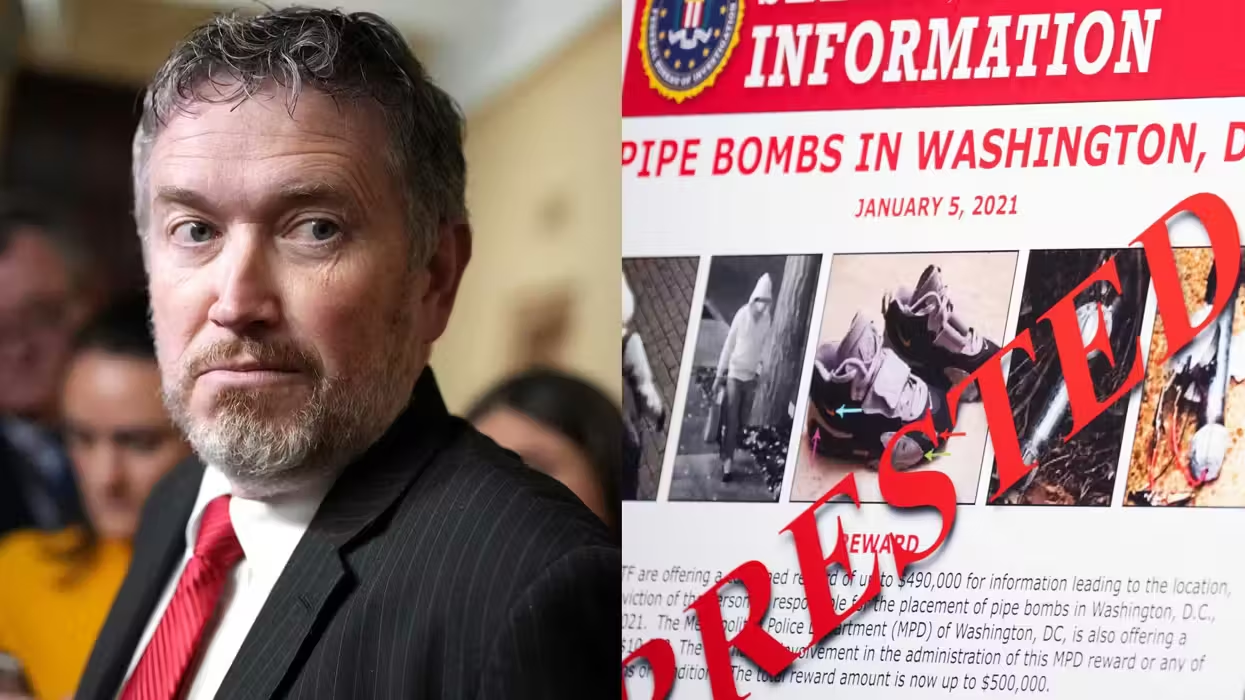
© 2025 Blaze Media LLC. All rights reserved.
Graphic Photos Show Gruesome Scene After South African Police Open Fire on Striking Miners
August 16, 2012
"We had a situation where people who were armed to the teeth, attack and killed others - even police officers."
JOHANNESBURG (AP) -- South African police opened fire Thursday on a crowd of striking miners that charged a line of officers trying to disperse them, killing some and wounding others in one of the worst shootings by authorities since the end of the apartheid era.
Police declined to offer casualty figures after the shooting at the Lonmin PLC mine near Marikana, a dusty town about 70 kilometers (40 miles) northwest of Johannesburg. However, police ministry spokesman Zweli Mnisi acknowledged late Thursday some of the miners there had been killed as more police and soldiers surrounded the hostels and shacks near Lonmin's shuttered platinum mine.
The shooting happened Thursday afternoon after police failed to get the striking miners to hand over machetes, clubs and other weapons.
Some miners did leave, though others carrying weapons began war chants and soon started marching toward the township near the mine, said Molaole Montsho, a journalist with the South African Press Association who was at the scene.
The police opened up with a water cannon first, then used stun grenades and tear gas to try and break up the crowd, Montsho said.
Suddenly, a group of miners rushed through the underbrush and tear gas at a line of police officers. Officers immediately opened fire, with miners falling to the ground. Dozens of shots were fired by police armed with automatic rifles and pistols.
Images broadcast by private television station e.tv carried the sound of a barrage of automatic gunfire that ended with police officers shouting: "Cease fire!" By that time, bodies were lying in the dust, some pouring blood. Another image showed some miners, their eyes wide, looking in the distance at heavily armed police officers in riot gear.
It was an astonishing development in a country that has been a model of stability since racist white rule ended with South Africa's first all-race elections in 1994. The shooting recalled images of white police firing at anti-apartheid protesters in the 1960s and 1970s, but in this case it was mostly black police firing at black mine workers.
President Jacob Zuma said he was "shocked and dismayed at this senseless violence."
"We believe there is enough space in our democratic order for any dispute to be resolved through dialogue without any breaches of the law or violence," Zuma said in a statement.
Barnard O. Mokwena, an executive vice president at Lonmin, would say only: "It's a police operation." In a statement earlier Thursday, Lonmin had said striking workers would be fired if they did not appear at their shifts Friday.
"The striking (workers) remain armed and away from work," the statement read. "This is illegal."
The unrest at the Lonmin mine began Aug. 10, as some 3,000 workers walked off the job over pay in what management described as an illegal strike. Those who tried to go to work Saturday were attacked, management and the National Union of Mineworkers said. On Sunday, the rage became deadly as a crowd killed two security guards by setting their car ablaze, authorities said. By Monday, angry mobs killed two other workers and overpowered police, killing two officers, officials said. Officers opened fire that day, killing three others, police said.
On Tuesday and Wednesday, thousands of miners had gathered at a rocky cliff within sight of the mine's smelter. They cheered, sang and marched around with machetes and clubs under the watchful eye of police officers in armored trucks. Some leaders of the miners spoke with the police and largely followed their instructions, breaking up the protest as dusk fell.
It remains unclear what sparked the miners' fatal charge at police. Mnisi, the police ministry spokesman, claimed the miners shot at police as well, using one of the weapons they stole from officers Monday.
"We had a situation where people who were armed to the teeth, attack and killed others - even police officers," the spokesman said in a statement. "What should police do in such situations when clearly what they are face with are armed and hardcore criminals who murder police?"
(WARNING: Graphic photos)
While the initial walkout and protest focused on wages, the ensuing violence has been fueled by the struggles between the dominant National Union of Mineworkers and the upstart Association of Mineworkers and Construction Union. Disputes between the two unions escalated into violence earlier this year at another mine.
Black miners long have faced low salaries and poor living conditions in shantytowns often beset by alcoholism, drug abuse and prostitution. Apartheid kept black African workers from more lucrative jobs offered to whites. Though the nation became truly democratic in the 1990s, the salaries of black miners remain low.
Mining drives the economy of South Africa, which remains one of the world's dominant producers of platinum, gold and chromium. Lonmin is the world's third largest platinum producer and its mine at Marikana produces 96 percent of all its platinum. The violence has shaken the precious metals market, as platinum futures ended up $39, or 2.8 percent, at $1,435.20 an ounce in trading Thursday on the New York Mercantile Exchange.
Meanwhile, Lonmin stock plunged 6.76 percent Thursday on the London Stock Exchange. The company's stock value has dropped more than 12 percent since the start of the unrest.
Lonmin also announced Thursday its CEO, Ian Farmer, had been diagnosed with a serious illness and had been hospitalized. It did not disclose Farmer's illness.
Some of the carnage was captured in the raw video below:
(WARNING: This video contains graphic images)
Want to leave a tip?
We answer to you. Help keep our content free of advertisers and big tech censorship by leaving a tip today.
Want to join the conversation?
Already a subscriber?
more stories
Sign up for the Blaze newsletter
By signing up, you agree to our Privacy Policy and Terms of Use, and agree to receive content that may sometimes include advertisements. You may opt out at any time.
Related Content
© 2025 Blaze Media LLC. All rights reserved.
Get the stories that matter most delivered directly to your inbox.
By signing up, you agree to our Privacy Policy and Terms of Use, and agree to receive content that may sometimes include advertisements. You may opt out at any time.







